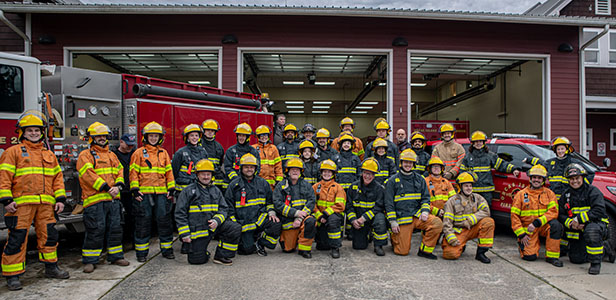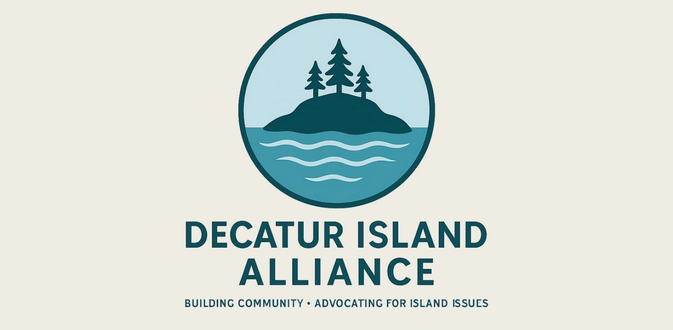— by Joe Symons —
The Comprehensive Plan is the roadmap for the future of this set of islands we call home. Many may reasonably and appropriately imagine that the vision crafted by fellow residents over 20 years ago is truly operational and has provided the basis for how we, as an multi-island community, go forward. Unfortunately, what has really been happening in these islands for the past nearly 50 years is market-driven growth. That we crafted a plan under the state’s Growth Management Act (GMA) some 25 years ago doesn’t mean that we have operated in accordance with this plan. Walk is not necessarily related to talk. Like all legislation, the GMA has many loopholes. It’s more like a sieve than a bowl.
Simply put, there are two choices before us. If we don’t “vote” by carefully crafting and abiding by a Comprehensive Plan, we will by default be giving away our power to someone else. Since many may not want to drill down into the arduous challenge of truly understanding our Comprehensive Plan, we will be effectively (and collectively) choosing, by default, Door number One.
Door number One is the Business as Usual path. It is the market-driven path. Right now the “market” driving growth in our home is dominated by two economic engines: tourism and second homes. Given the density map, the future growth “opportunity” (i.e. potential population) is stunningly, absurdly, ridiculously greater than what we have today, and note that this growth potential does NOT include the impact of the visitor population.
But we have a PLAN, many would say! Yes, we have a plan. What most may not know is that it is effectively toothless. There are no limitations on the number or location of building permits issued; there are no regulations regarding depletion of aquifers or salt-water intrusion, there are no limits on the number or location of transient rental permits issued, there is no information, much less discussion, of the implications of full buildout as it impacts our Vision, the Growth Management Act, carrying capacity or sustainability goals.
Door number Two is an actual, functional, meaningful, Vision and GMA-driven plan.
We don’t have to look far to see the impacts of Door number One, especially on small, rural, once-beautiful quiet charming little communities; we need only look to Nantucket, Martha’s Vineyard, Aspen, Jackson Hole, all of southern Marin county not protected by the Golden Gate National Recreational area, and many other places less well known. No one out there has solved the problem of unsustainable population growth. There is no off-the-shelf model we can simply adopt.
Adding to the challenge, Americans seem to have a mental mindset that elevates the economy to the top of the pecking order. Our economic system has serious flaws: only two will be discussed here.
First, our economy does a poor job of measuring really important but “non-monetary” values, experiences, desires, intentions. There’s no “value” that can be easily assigned to silence, rural vistas, community cohesion and connection, the take-for-granted safety of kids being able to walk home from school, eagles flying overhead, even a county that has no stoplights. I believe we all have our own list of essential reasons that we moved here and stay here, and most of those have to do with values of the heart.
Second, the economy is exceptionally adept at privatizing public resources (like the beauty and tranquility here) while externalizing (this means: not forcing businesses to pay for) the costs of doing business, from depleting aquifers to tail pipe carbon emissions to traffic jams to earthquakes from fracking. Who pays? the public pays.
America can tend to focus largely on “me” and only with grudging resistance on “we”. One need only look at resistance to taxes, much less tax increases, to gauge the resistance to acting in the interest of “we”.
The point, tho, is that there is no free lunch. Door number One, market-driven growth, has costs, generally borne by the “we”. This takes the form of higher taxes, more congestion, and the slow, steady, inexorable loss of those qualities that brought each of us here. In fact, the change appears to be so slow that it is difficult to get worked up about it and actually draw a line.
Door number Two, careful, plan-driven growth, has costs as well. We will have to have difficult conversations to find a fair way to ensure that we don’t get bigger than we truly want. This may mean we have to purchase and retire development “rights” that were inappropriately created years ago. We may have to defend our collective Plan-driven choices in court against private property owners.
The difference between these doors is that in the case of Door number One, we pay for what we don’t want, while with Door number Two, we pay for what we do want.
Either way, we pay.
The default action regarding choosing one or the other of these doors is to not choose; this actually means choosing Door number One. That’s the easy, no-brainer, no-effort solution. We’ve been doing it for decades. That it is not working is relatively easy to see (just look at the experience of living here during the summer of 2017) and, unfortunately, easy to ignore: most of us never learned much about how government works, how important as well as time consuming it is to be vocal, and most are caught in what is now being called the “distraction” economy.
Door number Two requires engagement. We have to learn. We have to discuss. We have to choose. We have to pony up (we have to pony up with door number One too but it’s less obvious even if more impactful).
This is elephant-in-the-living-room material.
If you don’t know this already, our county government is besieged with work, working to meet a constantly slipping deadline on its two-year extensions from the state to complete the Comprehensive Plan update. Right now it appears that going along with the County’s current course effectively means that we will experience a continuation of Door Number One’s unchecked market-driven growth.
The only way we’ll get a chance to even SEE door number Two is to ask for it. In planner-ese, this is a comprehensive buildout and impact analysis followed by a county-blessed (if not county-organized) comprehensive conversation about what each Door really means.
This will take time. It will also only happen if we ask for it, constantly, consistently, and perhaps unmercifully.
What’s on the table here is ownership. Who is taking ownership (i.e., responsibility) for the future of this place? (Let me rephrase that: “for OUR future of this place?) Our future, now, is in the hands of tourists and wealthy multiple-home owners, some of whom are building homes strictly to siphon off the money from airbnb and VRBO experiences. They don’t live here. Most important, they (and tourists) don’t vote here.
We vote here. Many may imagine that they vote just once every two years for a County Council member. In reality, we vote every day by choosing—or not—to write a letter, make a phone call, write an essay, attend an information event, read a web page (such as KeepSanJuansWild.org), attend and testify before the Planning Commission AND the County Council.
If we choose to not participate, we are choosing Door number One.
I urge all of us local full-time residents to up our game.
The train is leaving the station. Our future self, and the selves of our children and our neighbor’s children, depend on all being aboard.
At the KeepSanJuansWild.org website, “take action” steps are offered such as pre-written letters you can modify and send to County Council members. The website offers solid, real, comprehensive information about what is at stake. This information includes critical documents not available on the county’s web site and information on a “truth in planning” request (basically a buildout and impact analysis) unanimously approved by the Planning Commission in 2001 and then ignored by the County Council.
The conductor, standing on the train’s entry step, holds a hand out to help each of us climb aboard and advocate for Door Number Two. Please reach out and take it. Otherwise, by remaining on the platform, you are choosing Door Number One.
**If you are reading theOrcasonian for free, thank your fellow islanders. If you would like to support theOrcasonian CLICK HERE to set your modestly-priced, voluntary subscription. Otherwise, no worries; we’re happy to share with you.**








Joe,
Such a coherent and well articulated relevant piece. Thank you.
I am not yet full-time on Orcas as I have a home on Orcas as well as live bi-coastal in Manhattan.
Your words resonate deeply. Their meaning is a clear vision of why we purchased our home on Orcas. We wanted to avoid the very profit-centric craze of developers, most of whom pillage and do their thing and then move on to the next unspoiled community, never taking up residence in any of their pet profit projects.
Like many we want to make good (clean) investments and a reasonable profit because that is the model to which this society adcribes; but not all things of value equate to a dollar amount in the bank. In fact, I’m personally certain that the most priceless experiences in life are not at all related to the amount of money you have or profiting financially from a purchase or any other endeavor.
Specifically, it’s a very easy decision on our part to forego an increase in property values by turning Orcas into a money making vacation rental Mecca like Martha’s Vineyard or southern Marin County.
Yes, we need money like everyone else but there are choices to make and each needs to examine from where they truly derive their mojo, joy or deepest satisfaction—a review of one’s priorities.
As you state so well, the experiences you describe cannot be replaced by money, which is a tool to be placed at the service of intelligently improving the quality of life to dissuade, among other things, over-population, over-build, and unsustainably increasing density.
What you value I want to impress on others to value and to speak up: that is, the quality of the moments in between …in between the constant chatter, background, light pollution, growing sprawl, impact on our fragile ecosystem, etc. One of the striking experiences I remember while staying at the Kangaroo Inn years ago before we purchased was coming out into a winter’s night on the way to Mijita’s— one of the few year-round dining options— and looking up to actually experience the Milky Way unaided. As an amateur Astronomer, it was an experience and way to remind myself of the big picture that immediately grounds a person (e.g., light pollution destroys this—we know not what we lose and for what? More green paper?).
The entire purpose of money as a tool is to help obtain quality experiences while we’re still above ground.
These expwriwnces don’t necessarily depend on money; the blind pursuit of money for its own sake interrupts and irrevocably destroys peace, space and the ability to breath deeply— all necessary for mental and physical health (and sanity).
I would like to impress on everyone to pick up the gauntlet you lay down here no matter how heavy and put in the time to elaborate and define door number 2 using your above words as guideposts . I will.
I have a full time business to run from across the country and split my life between Orcas and NYC, but I will make the time and invest myself in defining and supporting door # 2, and answer your call as you suggest.
Thank you for asking.